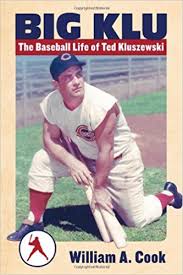A friend of my just gave me an Indiana University basketball program for a 1945 game against the Minnesota Golden Gophers. It was six years before I was born, so to find something older than me is always rewarding. The game itself took place in the war years, so players were lost from the starting line-up to serve our country. The Hoosiers, were in fact coached by Harry Good, who replaced Branch McCracken on a interim basis the year before, allowing McCracken to serve his duties as a lieutenant in the U.S. Navy. Coach McCracken, who’s Hurryin’ Hoosiers won the National Championship in 1940, would return to lead the team in 1946.
The 1944-45 season was unremarkable. The team finished 10-11, 3-9 in the Conference, and did not qualify for post-season action. They lost eight of their last nine games, including that 48-56 game against the Golden Gophers, following leading scorer Gene Faris departure from the team for his call to military service. The game program was dated February 3, 1945, my Dad’s 24th birthday, and was distributed to fans during that unfortunate losing streak. My father had graduated from I.U. in 1942 along with my mother who was one-day younger. They married January 5, 1946, two days after the Hoosiers beat Butler 58-47 as part of an eight game winning streak in the final year of Harry Good’s tenure as interim coach.
There wasn’t much documented about the 1944-45 Minnesota Golden Gophers. They were coached for that single season by Weston Mitchell and finished the year at 8-13, including a loss to the Hurryin’ Hoosiers just prior to the long losing streak. I.U.’s Ray Brandenburg hit a last-second shot for that 48-46 victory. James Copeland, from my mom’s hometown of Elwood, Indiana, had 11 points to go with Brandenburg’s 10, and Gene Faris, in his last I.U. game until he returned from war duty in 1947, led the Hoosiers with 13 points.
In my opinion, the real story of the 1944-45 Hurryin’ Hoosiers was a bench player by the name of Ted Kluszewski. He was a 6’2″ freshman that year from Argos, Illinois and only played in two games. Kluszewski excelled in football and baseball at I.U. He probably joined the basketball team as a result of the attrition of players due to the war. The war affected his life in a positive way, as travel restrictions forced the Cincinnati Reds, who traditionally held spring training in Tampa, Florida, to train at Indiana from 1943-45. Kluszewski’s batting power drew the attention of Reds’ groundskeeper Matty Schwab and eventually team scouts offered him a contract. Kluszewski hit .443 for the I.U. baseball team in 1945 and was a football star on the 9-0-1 team, where he earned first-team Big Ten honors as an End. The team finished 4th in the final AP poll, just behind National Champion Army. Football kept Ted at I.U. until his graduation in 1946. By 1948, he was the Reds’ starting first baseman, where in a controversial move, he cut off the sleeves of his uniform to accommodate his massive shoulders and biceps.
“Big Klu” was a career .298 hitter with 279 home runs and 1,028 RBI in 1,718 games over 15 years. In ten of those years, he walked more often than he struck out, and during the 1955 season he hit 47 home runs and only struck out 40 times, a feat no one has yet to duplicate. He left the Reds in 1957, then played 100 games for the Pittsburgh Pirates, and traded to the Chicago White Sox at the end of the 1959 season, who were in a close pennant race.
He joined the “Go-Go” Sox in August of 1959 and powered them to the American League crown. In the first game of the World Series against the Dodgers, he hit two home runs and drove in five for an 11-0 White Sox rout. He ended up hitting .391 in the series with 3 HR and 10 RBI, and earned three 1960 Ford Falcons from Jim Moran, a Chicago automobile dealer. Kluszewski also achieved notoriety in having his name misspelled on the back of Bill Veek’s ground-breaking innovation to baseball jerseys. When Major League Baseball expanded in 1960, he was left unprotected and traded to the Los Angeles Angels for his final season. He died at age 63, after retiring as a Reds’ hitting coach.
The 1959 “Go-Go” Sox also featured my first baseball hero, Sherm Lollar. Sherm had a home run in game 4 of the series, the only other White Sox victory. Kluszewski’s third homer came in game 6, but the Dodgers prevailed to take the World Series. The “Big Klu” and Sherm Lollar connection is what makes the I.U. basketball program a special part of my collection. It also brings the two sports, basketball and football, together for a brief moment in history; and recognizes my dad’s birthday that he probably celebrated serving our country.

Leave a Reply